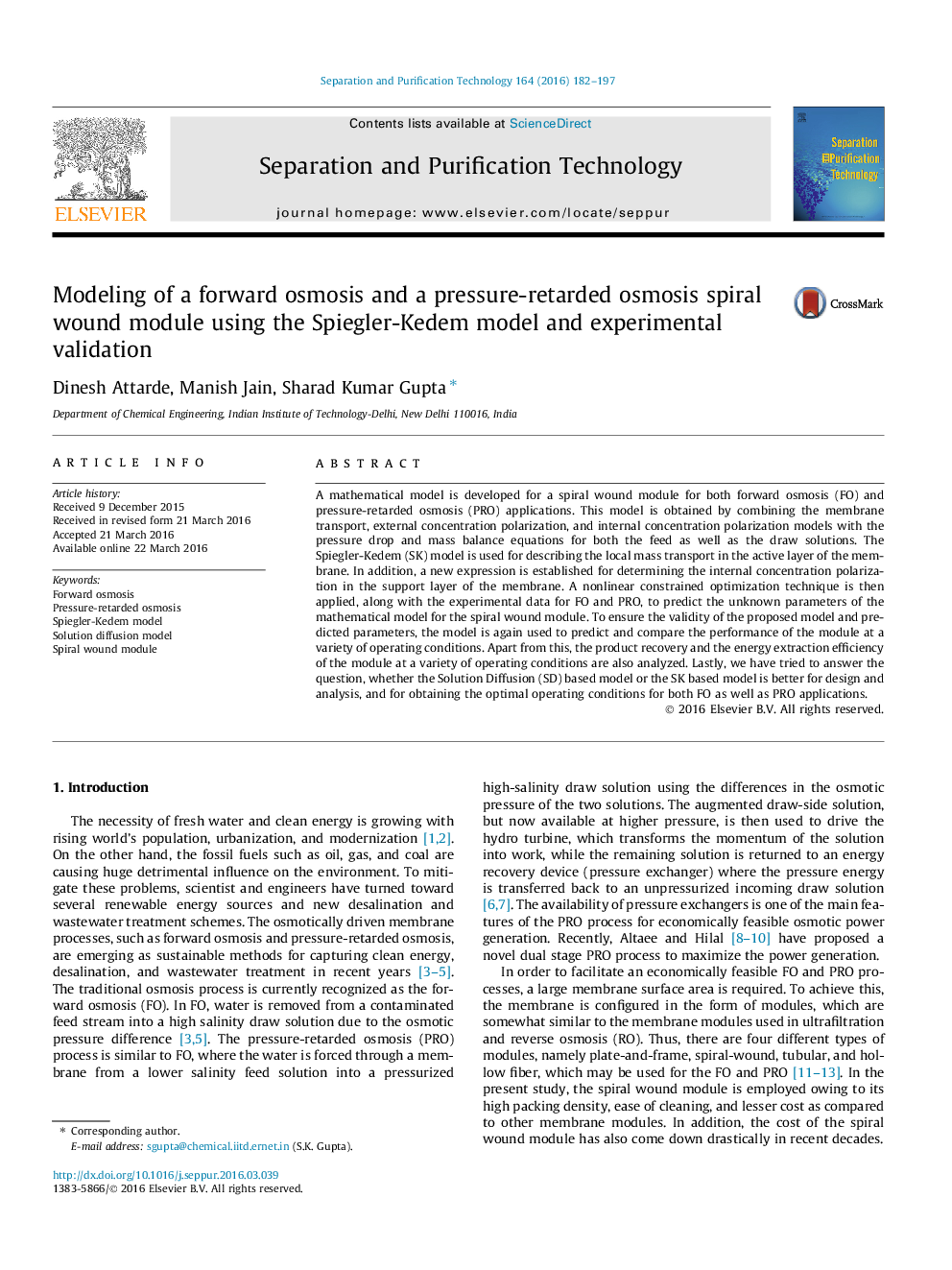| کد مقاله | کد نشریه | سال انتشار | مقاله انگلیسی | نسخه تمام متن |
|---|---|---|---|---|
| 639929 | 1456956 | 2016 | 16 صفحه PDF | دانلود رایگان |

• The proposed model is applicable to both leaky and non-leaky membrane modules.
• A new expression for the ICP is proposed.
• The model is validated using experimental results from membrane modules.
• Extraction energy efficiency of the module based PRO process is analyzed.
A mathematical model is developed for a spiral wound module for both forward osmosis (FO) and pressure-retarded osmosis (PRO) applications. This model is obtained by combining the membrane transport, external concentration polarization, and internal concentration polarization models with the pressure drop and mass balance equations for both the feed as well as the draw solutions. The Spiegler-Kedem (SK) model is used for describing the local mass transport in the active layer of the membrane. In addition, a new expression is established for determining the internal concentration polarization in the support layer of the membrane. A nonlinear constrained optimization technique is then applied, along with the experimental data for FO and PRO, to predict the unknown parameters of the mathematical model for the spiral wound module. To ensure the validity of the proposed model and predicted parameters, the model is again used to predict and compare the performance of the module at a variety of operating conditions. Apart from this, the product recovery and the energy extraction efficiency of the module at a variety of operating conditions are also analyzed. Lastly, we have tried to answer the question, whether the Solution Diffusion (SD) based model or the SK based model is better for design and analysis, and for obtaining the optimal operating conditions for both FO as well as PRO applications.
Journal: Separation and Purification Technology - Volume 164, 30 May 2016, Pages 182–197